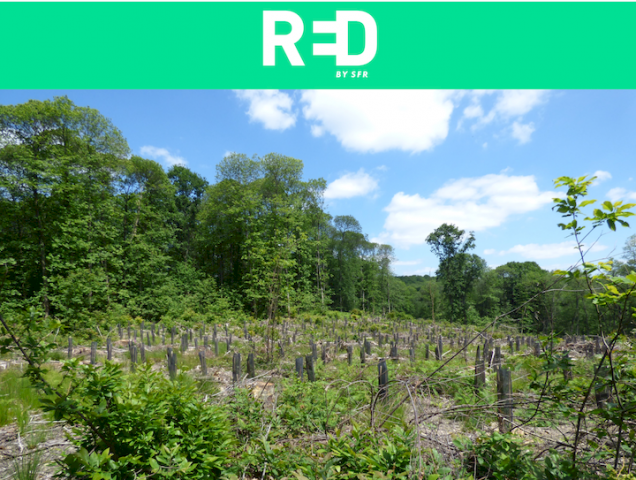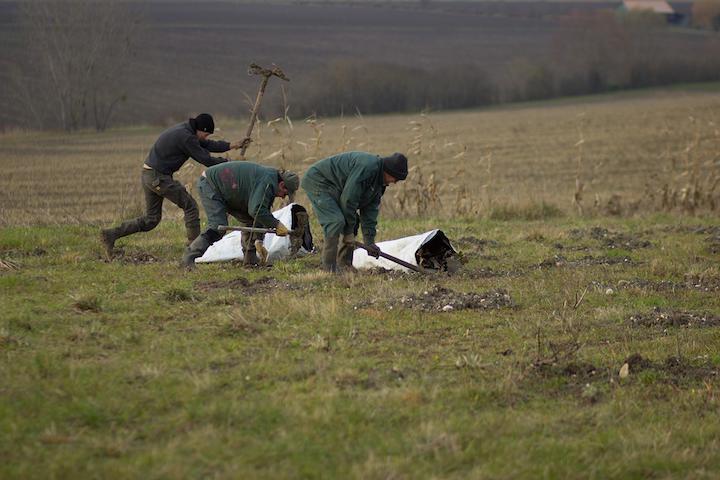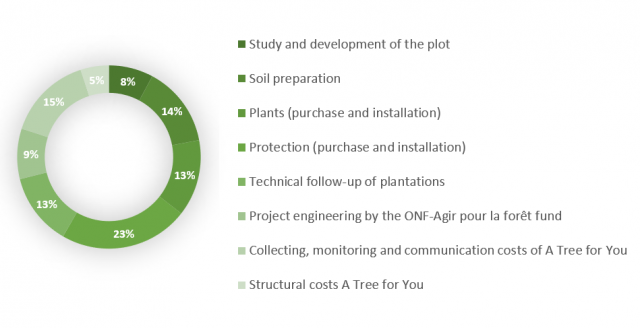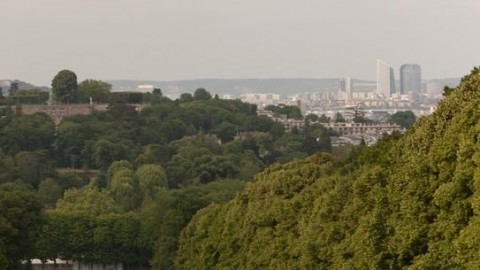
Background & challenges
“The RED forest” is a project launched by RED by SFR via its #REDsponsable program. It is reserved for donors from its community to plant healthy trees in the devastated forest of Montmorency.
In 2018, chestnut trees in forests to the north of the Ile-de-France region were found to be dying out due to a pathogen causing the devastating chestnut ink disease. Provoked by an organism present in soil water, this disease penetrates the root system of trees and triggers rapid necrosis. The tree can then no longer take in water and becomes extremely susceptible to drought. It can die in just a few days.
The chestnut tree is an emblematic species of Ile-de-France and particularly well established in the forest of Montmorency with an occupancy rate of 70%. The damage is such that in 2018 the forest was classified as being in a health crisis. When the trees are diseased or dead, the ONF must then resort to sanitation cutting. Next, planting is carried out to restore healthy afforestation with more resistant species.
Through sanitation cutting and replanting 3,306 trees on a plot of land, the project aims to:
- restore forest cover that is more resilient to climate change thanks to the species installed;
- protect the habitat of deer, wild boar, foxes, badgers, endemic birds like the woodcock, amphibians, as well as many species of beetles and lepidoptera. Finally, the forest is also home to the royal fern, a species protected because of its rarity;
- restore rainwater filtration to the forested area. The forest of Montmorency is key to tackling erosion in the region;
- carbon sequestration in the soil, branches, and trunks. According to ONF calculations, over the long term (160 years) this project on the plot could sequester some 720 tonnes of CO2 per hectare, i.e. 820 tonnes of CO2 for this project;
- ultimately produce timber by exploiting this forest for the next 160 years.
Project type

Forestry
Beneficiaries

The inhabitants of neighbouring communes who regularly visit this forest
Number of trees

A total of 3,725 to be planted to retain 2,980 (80%) following the first thinning operation 35 years after planting
Species planted

Sessile oak, birch and sorb trees with a natural increase of chestnut already present on the plot.
Partner

Office National des Forêts

Works timeline
- Beginning of October 2021: soil preparation and tillage
- December 2021: start of planting
- From 2022 onwards: crushing of partitions if necessary. The aim is to create paths to facilitate the passage and maintenance of the reforested plots.
- From 2024: replanting (planting of new trees) if there is more than 20% mortality of the planted trees
- From 2025 onwards: clearing will take place every 5 years. This removal of competing vegetation (brambles, ferns, etc.) allows the young plants to regain light
- First thinning at 35 years (cutting of a certain number of planted trees, in order to facilitate the growth of the trees by ridding them of superfluous competition)
- The exploitation of the forest, including cutting, will take place within 160 years.
Planting partner
The territories under the wing of the Office national des Forêts (ONF) cover nearly 11 million hectares of forest, of which 6 million in French overseas departments and 4.7 million in metropolitan France. With a workforce of around 9,000 deployed across the whole territory, the ONF is responsible for the renewal and upkeep of 1,300 state-owned forests and 15,600 community forests. Managing public forests reconciles three inseparable objectives: meeting human needs by producing and harvesting timber, environment protection, and welcoming the public. The approach is based on the forest regime, which provides a regulatory framework and set of guarantees for preserving forests over the long term, while ensuring renewal of timber resources.
BUDGET
The total budget to be collected is 59 508€, i.e. 18€ per tree, broken down as follows:

Starting March 9, 2021, each donation made by a customer for a new subscription is matched by RED by SFR!


